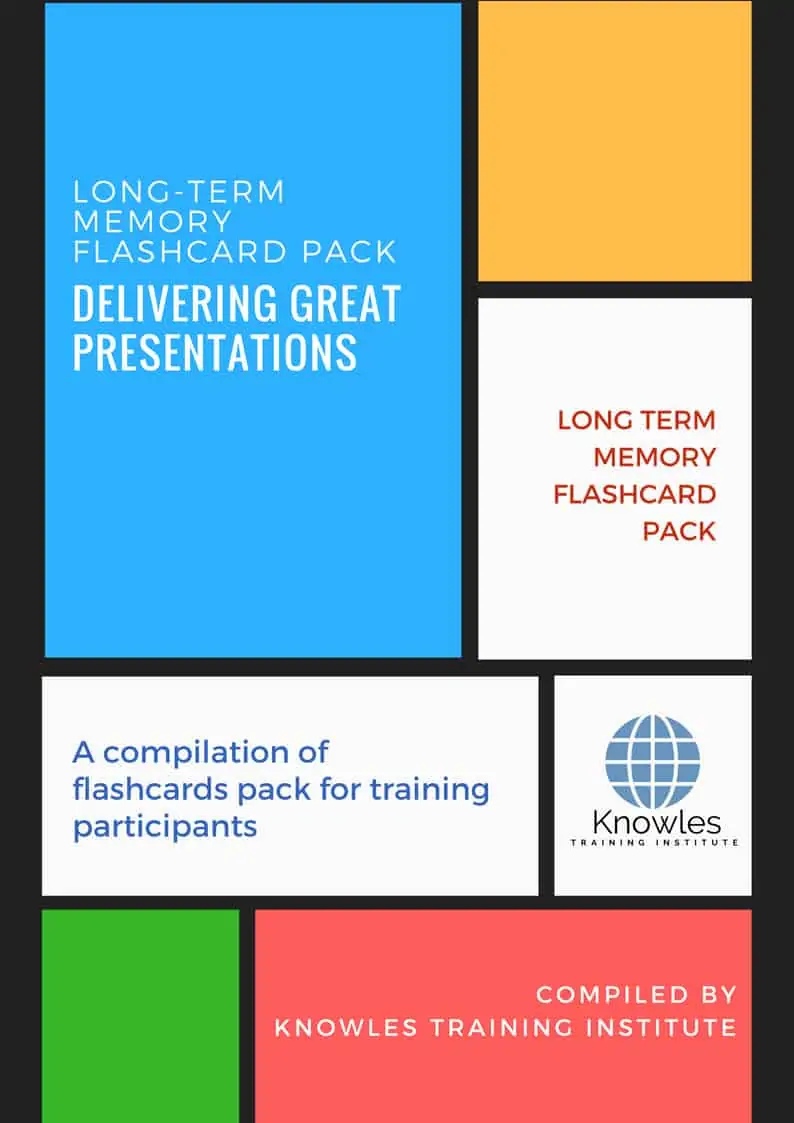Delivering Great Presentation Course
Delivering a Great Presentation Training Course
Delivering a Great Presentation Training Course in Singapore

About This Delivering a Great Presentation Training Course Singapore
Delivering a Great Presentation Training Course Singapore
To deliver an excellent presentation, you don’t have to raise your voice or perform tricks to keep your audience engaged. Many studies have found that public speaking is the number one fear amongst most people, outranking flying, snakes, insects, and even death. It is also one of the skills that can make or break a person’s career.
In this presentation skills course, training participants will effective presentation skills that will make them highly competent.
Who Should Attend This Delivering a Great Presentation Training Course Singapore
This Delivering a Great Presentation Training Course is ideal for anyone who would like to gain a strong grasp and improve their Delivering Great Presentations.
All Staff Within An Organisation
Managers
Team Leaders
Executives
Assistants
Officers
Secretaries
Group Size For This Delivering a Great Presentation Training Course Singapore
The ideal group size for this Delivering Great Presentations course is:
Minimum: 5 Participants
Maximum: 15 Participants
Course Duration
The duration of this Presentations workshop is 2 full days. Knowles Training Institute will also be able to contextualised this workshop according to different durations; 3 full days, 1 day, half day, 90 minutes and 60 minutes.
2 Full Days
9 a.m to 5 p.m
Course Objectives
Below Is The List Of Course Objectives Of Our Delivering Great Presentations Course
Presentation Skills Training – Part 1
- Perform A Needs Analysis And Prepare An Outline For Your Presentation.
- Select Presentation Delivery Methods.
Presentation Skills Training – Part 2
- Practice Verbal And Non-Verbal Communication Skills.
- Elimiate Nervousness Before and During Presentations.
Presentation Skills Training – Part 3
- Develop And Use Flip Charts With Colour.
- Create Targeted Powerpoint Presentations.
Presentation Skills Training – Part 4
- Utilise White Board For Reinforcement.
- Explain How Video And Audio Enhance A Presentation.
- Enrich The Learning Experience With Humour, Questions, And Discussion During Your Presentation.
Course Content
Below Is The List Of Course Content Of Our Delivering Great Presentations Course
Presentation Skills Course Singapore – Part 1: Creating The Program For Your Presentation
Delivering a Great Presentation Training Course Value Added Materials
Each participant will receive the following materials for the Delivering Great Presentations course
Delivering a Great Presentation Training Course Learner’s Guide

Delivering a Great Presentation Training Course Key Takeaways Notes

Delivering a Great Presentation Training Course Essentials Ebook

Delivering a Great Presentation Training Course Handouts

Delivering a Great Presentation Training Course 30-Day Action Plan

Delivering a Great Presentation Training Course MindMaps Pack

Delivering a Great Presentation Training Course PPT Slides Used During Course

Delivering a Great Presentation Training
Course Long-Term Memory Flashcards Pack

Delivering a Great Presentation Training Course E-Learning Course

Delivering a Great Presentation Training Course Online Video Course

Delivering a Great Presentation Training Course Essentials Audiobook

Delivering a Great Presentation Training Course Infographics Pack

Delivering a Great Presentation Training Course Certification
Each course participant will receive a certification of training completion

Course Fees
There are 4 pricing options available for this Delivering Great Presentations training course. Course participants not in Singapore may choose to sign up for our online Delivering Great Presentations training course.
- SGD 889.97 For a 60-minute Lunch Talk Session.
- SGD 389.97 For a Half Day Course Per Participant.
- SGD 589.97 For a 1 Day Course Per Participant.
- SGD 789.97 For a 2 Day Course Per Participant.
Discounts available for more than 2 participants.
Upcoming Course Schedule
Contact us for the latest Delivering Great Presentations Training course schedules:
Phone: +65 6714 6663
Email: contact@knowlesti.com
Message:
Download Course Brochure

Request for this Delivering Great Presentations skills course brochure. Fill up the short information below and we will send it to you right away!
Post-Training Support: A vast majority of training does not have any effect beyond 120 days. But to work, training has to have a strong pre- and post-training component. Post-training reinforcement consequently helps individuals to recall the understanding and ask questions.
Blended Learning: Learning does not occur in the classroom. Virtually everybody prefers distinct ways of learning. Successful learning should have a multi-channel, multi-modal strategy.
We Understand The Industry: Similarly, we’ve got a profound comprehension of the business, business design, challenges, strategy and the that our participants are in and have designed the courseware to cater to their professional needs.
Course Content: Knowles Training Institute’s material is relevant, of high quality and provide specific learning outputs. As a result, Participants will leave the training course feeling as they have gained a strong understanding and will also be in a position to execute what they have learned sensibly.
Course Development — The workshop modules follow a systematic and logical arrangement. Therefore, this structure helps to ensure that the course material allows the facilitators to deliver the course in a logical arrangement. Consider the subjects as building bricks into learning, our facilitators slowly build towards a comprehensive picture of this entire topic.


Course Enquiries

Fill up the form and we will get back to you in less than 1 working day.
Alternatively, give us a call to have one of our training consultants contact you. Our corporate training courses can be contextualized to meet your organization’s training needs. Leverage on our large pool of professional trainers and consultants for your organization’s training needs.
Office Address: 60 Paya Lebar Rd, #07-54 Paya Lebar Square, Singapore 409051
Office Phone: +65 6714 6663
Email: contact@knowlesti.sg
We Guarantee 100% Privacy. We Respect Your Privacy. Your Information Will Never Be Shared.


